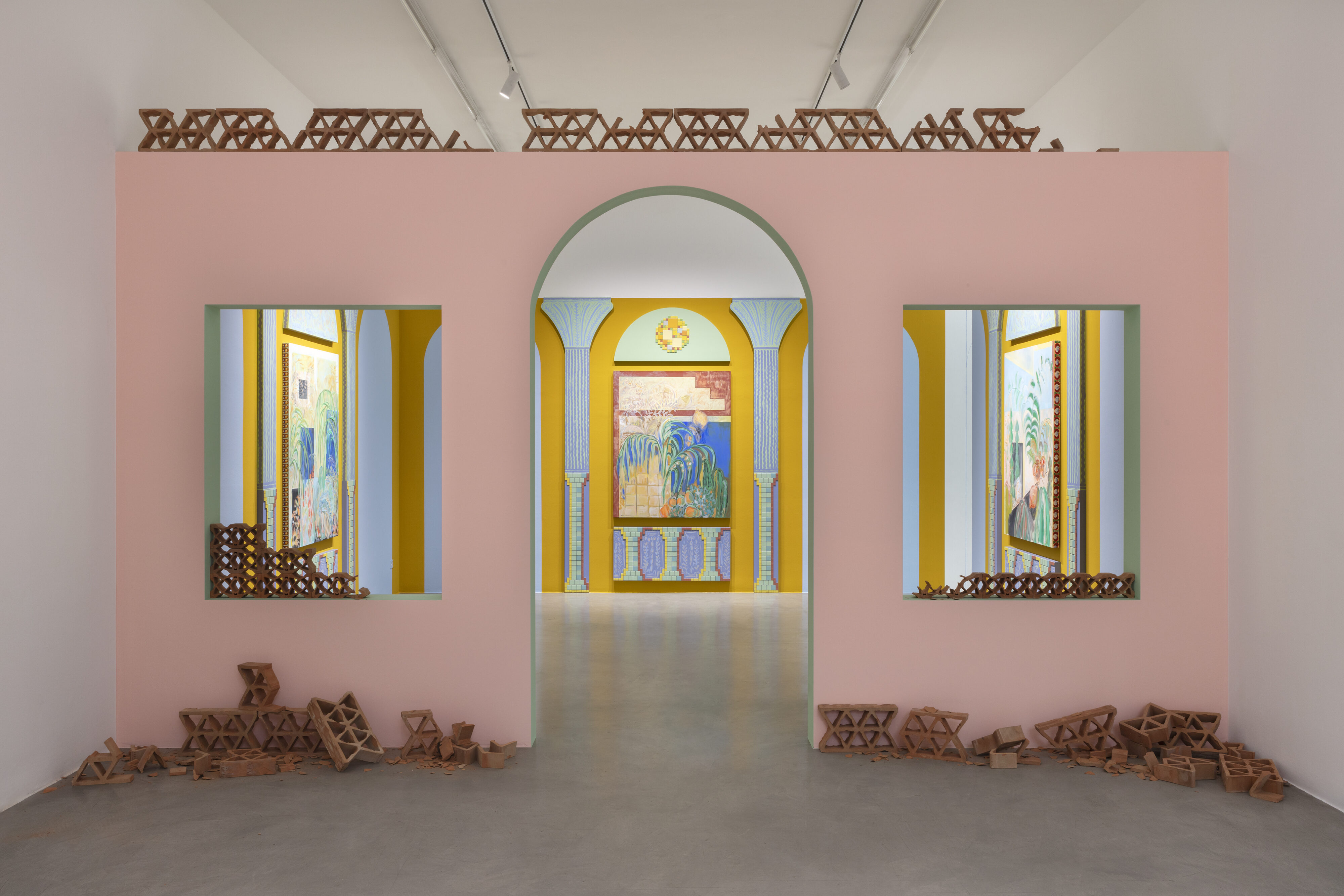22/03 - 06/05, 2023
-
Sol Calero
Casa encontrada
While the tiles of mosaic emerge up out from the floor, a structure that recalls that of a house without windows or frames invites the guests to step forwards. Beyond the threshold, the imposing paintings completely covering the walls of the gallery transform the second half of the first room into a forgotten loggia. Columns join together at the top, and, by forming arches, become an element of access to the view of the external world, as natural frames.
The landscapes that one glimpses among the arches do not just come alive and take shape from the architectural element itself, but the geometric shapes – emblems of human activity – mix together and overlap with the organic and changing shapes of the creation through transparencies and veils. The new series of paintings by Sol Calero (Caracas, Venezuela, 1982) is a point of departure from her previous work: whereas in the past her subjects were more defined and made unmistakable reference to her origins, this new production is more disassembling and focuses on the intersection of human action and that of nature. These views framed by the vaults look out onto worlds in which the nature-culture dichotomy does not seem to exist: human action does not take place in opposition to or in protection of nature, but inside of it.
Are nature and culture really two so distinctly opposed to one another? The artist chooses places of forgetting – those hybrid zones significantly changed by human intervention, but then abandoned and reabsorbed by the environment – as a metaphor and starting point to begin to sew back up the clear dividing line between this dichotomy, thereby reassessing the meaning of ruin and reflecting on the meaning of a common home.
Sol Calero digs then into the background of the gallery, almost turning it into an archaeological site. But the title, Casa encontrada (found home), seems to suggest more a meeting than a discovery. And the meeting expresses in the best way possible the sense of egalitarian convergence between two entities, two forces, which come together and linger voluntarily. The intention of discovering, on the contrary, alludes to a way of acting that has less to do with exchange and reciprocity: of the two entities that come into contact, only one is active, and it exercises a force vis-à-vis the other that is objectified in order to be understood.
The artist, who has lived in Europe for many years, but spent her childhood and adolescence in South America, is well aware of the fact that the dominant narrative has always described the relationship between the “Old” and “New World” as a discovery that the former made of the latter, and that the very act of naming – precisely as in this case (Old and New) – generates an alteration of reality, a particular gaze conditioned by the differences between terms which did not exist before. Whoever possesses language possesses the reflection of the world expressed and implicit in this language.
With Casa encontrada, Sol Calero invites us to an appointment with the remains and fragments of stories and places that have ceased to exist. And not with the intention of freezing them in place and exhibiting them in museum displays, but of showing that human civilizations have always been an open laboratory of social experimentation, not a linear march towards modernity and the institutions of the present day. By subverting the typically western prejudices of Otherness, the artist’s work makes use of the counter-hegemonic potential of art in order to turn the gallery into a lively and dynamic space aimed at the communitarian experimentation of social structures, which in this way can be explored and transformed. It is an aesthetic of turbulence, whose corresponding ethic is not given in advance. It is an infinite process, and thus often incomplete; it is an invitation to refuse the bureaucratization of the mind, a stimulus to go ahead and to burn back, renouncing the idea of a single direction a priori; it’s a zig-zag in which the multiplicity and reversibility of the anthropological options emerges gradually from the traces of the past, without ever coming to an end. An aesthetic, therefore, is more than a philosophy or theory of art and of the beautiful; it is a way of inhabiting a space, a special position, a way of seeing and transforming oneself. And this found home in the background of the gallery is not just a physical discovery, but it is above all a metaphysical one: returning to the imagining of environments in which beings interact amongst themselves like shared habitations to be taken care of.
Casa encontrada certainly does not offer absolute certainties, but instead a series of solid clues: it defines the capacity for imagining alternative and oppositional aesthetic acts as an answer to current cultural practices. Whoever is lucky enough to pass through its spaces will reassess the importance of the primordial attitude towards self-determination of one’s environment and the recovery of the instinct to build one’s own home, and therefore one’s own life.
Francesco Scalas
While the tiles of mosaic emerge up out from the floor, a structure that recalls that of a house without windows or frames invites the guests to step forwards. Beyond the threshold, the imposing paintings completely covering the walls of the gallery transform the second half of the first room into a forgotten loggia. Columns join together at the top, and, by forming arches, become an element of access to the view of the external world, as natural frames.
The landscapes that one glimpses among the arches do not just come alive and take shape from the architectural element itself, but the geometric shapes – emblems of human activity – mix together and overlap with the organic and changing shapes of the creation through transparencies and veils. The new series of paintings by Sol Calero (Caracas, Venezuela, 1982) is a point of departure from her previous work: whereas in the past her subjects were more defined and made unmistakable reference to her origins, this new production is more disassembling and focuses on the intersection of human action and that of nature. These views framed by the vaults look out onto worlds in which the nature-culture dichotomy does not seem to exist: human action does not take place in opposition to or in protection of nature, but inside of it.
Are nature and culture really two so distinctly opposed to one another? The artist chooses places of forgetting – those hybrid zones significantly changed by human intervention, but then abandoned and reabsorbed by the environment – as a metaphor and starting point to begin to sew back up the clear dividing line between this dichotomy, thereby reassessing the meaning of ruin and reflecting on the meaning of a common home.
Sol Calero digs then into the background of the gallery, almost turning it into an archaeological site. But the title, Casa encontrada (found home), seems to suggest more a meeting than a discovery. And the meeting expresses in the best way possible the sense of egalitarian convergence between two entities, two forces, which come together and linger voluntarily. The intention of discovering, on the contrary, alludes to a way of acting that has less to do with exchange and reciprocity: of the two entities that come into contact, only one is active, and it exercises a force vis-à-vis the other that is objectified in order to be understood.
The artist, who has lived in Europe for many years, but spent her childhood and adolescence in South America, is well aware of the fact that the dominant narrative has always described the relationship between the “Old” and “New World” as a discovery that the former made of the latter, and that the very act of naming – precisely as in this case (Old and New) – generates an alteration of reality, a particular gaze conditioned by the differences between terms which did not exist before. Whoever possesses language possesses the reflection of the world expressed and implicit in this language.
With Casa encontrada, Sol Calero invites us to an appointment with the remains and fragments of stories and places that have ceased to exist. And not with the intention of freezing them in place and exhibiting them in museum displays, but of showing that human civilizations have always been an open laboratory of social experimentation, not a linear march towards modernity and the institutions of the present day. By subverting the typically western prejudices of Otherness, the artist’s work makes use of the counter-hegemonic potential of art in order to turn the gallery into a lively and dynamic space aimed at the communitarian experimentation of social structures, which in this way can be explored and transformed. It is an aesthetic of turbulence, whose corresponding ethic is not given in advance. It is an infinite process, and thus often incomplete; it is an invitation to refuse the bureaucratization of the mind, a stimulus to go ahead and to burn back, renouncing the idea of a single direction a priori; it’s a zig-zag in which the multiplicity and reversibility of the anthropological options emerges gradually from the traces of the past, without ever coming to an end. An aesthetic, therefore, is more than a philosophy or theory of art and of the beautiful; it is a way of inhabiting a space, a special position, a way of seeing and transforming oneself. And this found home in the background of the gallery is not just a physical discovery, but it is above all a metaphysical one: returning to the imagining of environments in which beings interact amongst themselves like shared habitations to be taken care of.
Casa encontrada certainly does not offer absolute certainties, but instead a series of solid clues: it defines the capacity for imagining alternative and oppositional aesthetic acts as an answer to current cultural practices. Whoever is lucky enough to pass through its spaces will reassess the importance of the primordial attitude towards self-determination of one’s environment and the recovery of the instinct to build one’s own home, and therefore one’s own life.
Francesco Scalas
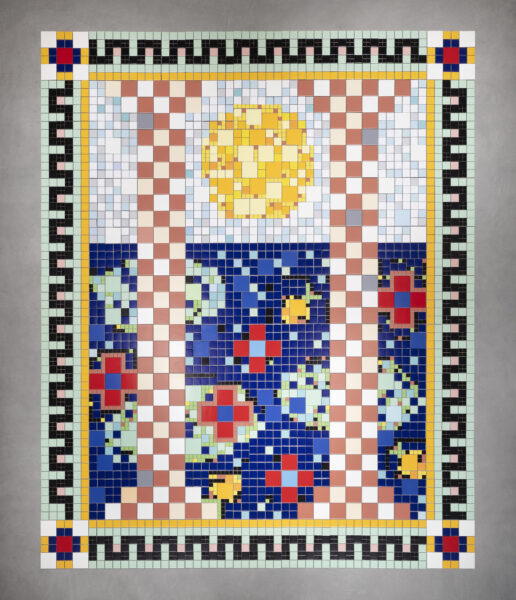 Untitled, 2023Tiles
Untitled, 2023Tiles
270×330 cm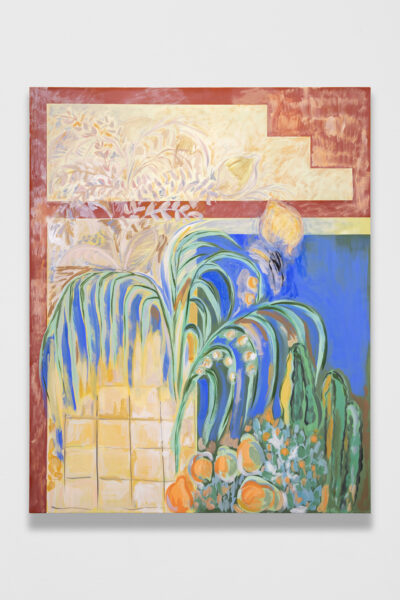 Casa Arapicara, 2023acrylic paint on canvas
Casa Arapicara, 2023acrylic paint on canvas
150×120×4,5 cm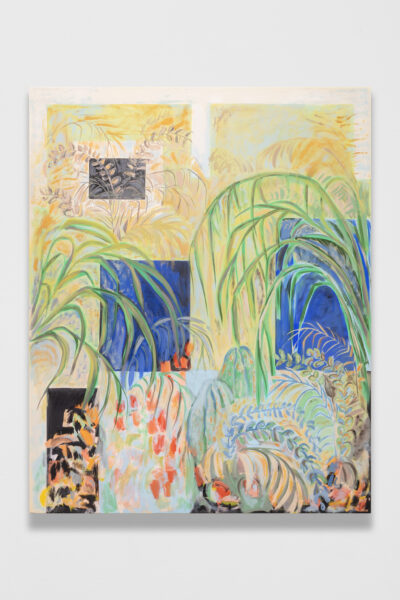 Casa Belo Jardim, 2023Acrylic paint on canvas
Casa Belo Jardim, 2023Acrylic paint on canvas
150×120×4,5 cm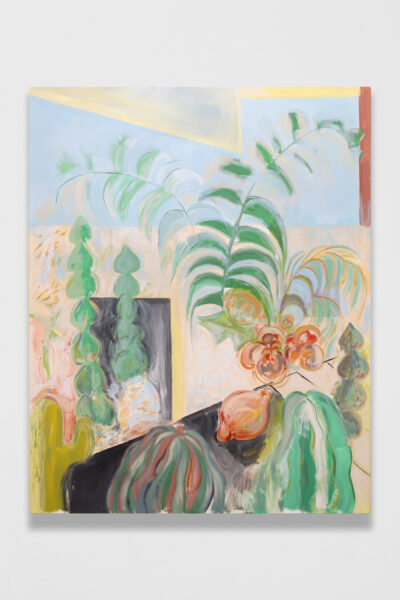 Casa Iguatù, 2023Acrylic paint on canvas
Casa Iguatù, 2023Acrylic paint on canvas
150×120×4,5 cm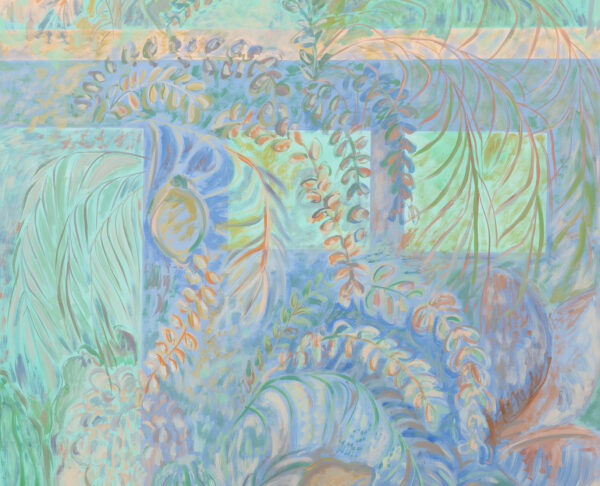 Casa Encontrada, 2023acrylic paint on canvas
Casa Encontrada, 2023acrylic paint on canvas
150×120×4,5 cm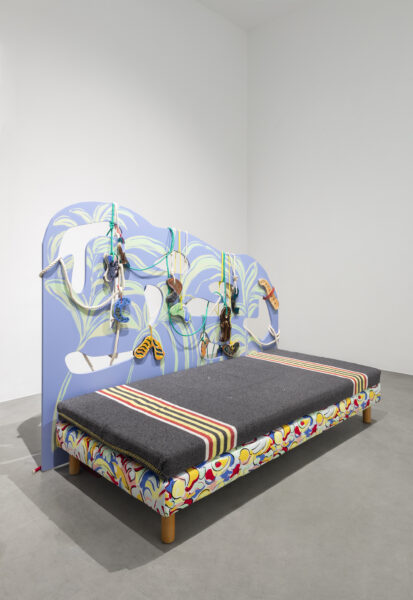 SCCE2023 , 2023mixed media
SCCE2023 , 2023mixed media
180×90×36 cm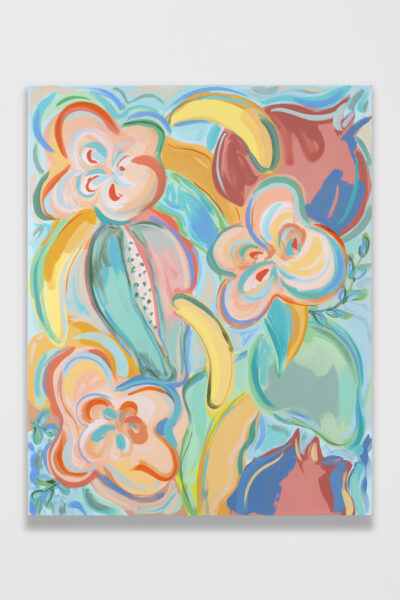 Catherine, 2023Acrylic paint on canvas
Catherine, 2023Acrylic paint on canvas
100×80×4,5 cm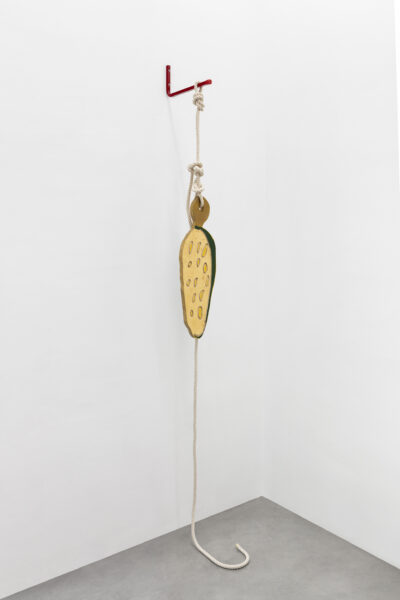 Maíz, 2018Wood, acrylic paint, gold leaf, mosaic, copper sheets, metal sheets, plastic pearls
Maíz, 2018Wood, acrylic paint, gold leaf, mosaic, copper sheets, metal sheets, plastic pearls
68×23×21 cm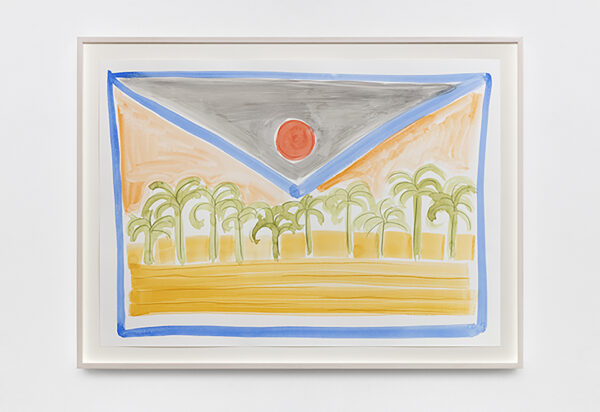 Sol Calero, Correspondencia, 2021Watercolor and color pencil on paper
Sol Calero, Correspondencia, 2021Watercolor and color pencil on paper
50×70 cm
SC285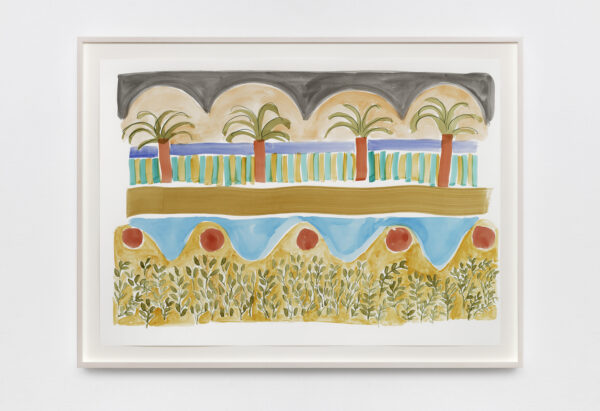 Sol Calero, Diseño de cenefa 1, 2021Watercolor and color pencil on paper
Sol Calero, Diseño de cenefa 1, 2021Watercolor and color pencil on paper
50×70 cm
SC282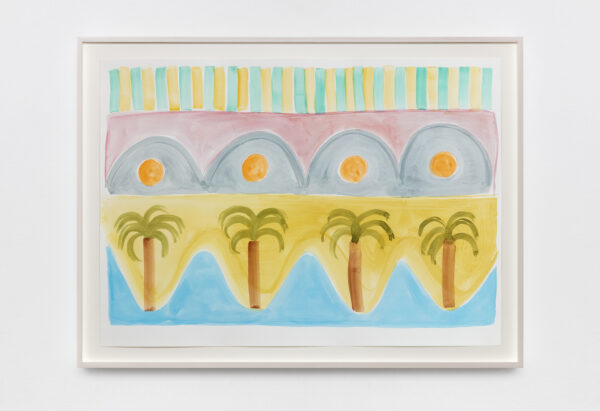 Sol Calero, Diseño de cenefa 2, 2021Watercolor and color pencil on paper
Sol Calero, Diseño de cenefa 2, 2021Watercolor and color pencil on paper
50×70 cm
SC284




